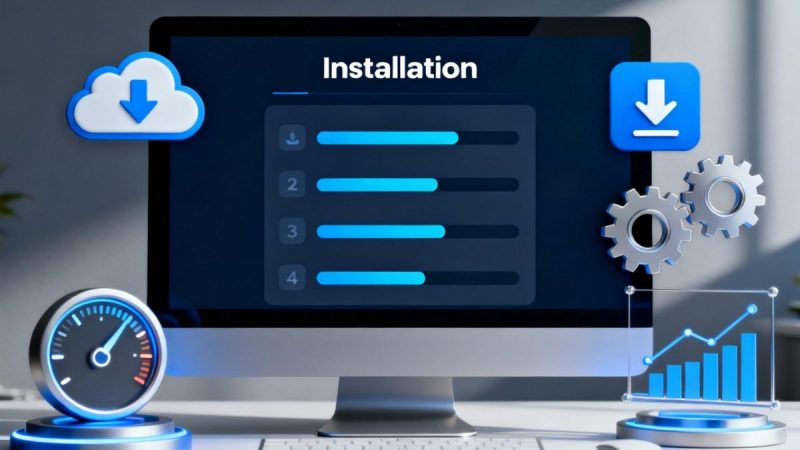How To Leverage Automation For Seamless Software Development

Automation can be leveraged for seamless software development in several steps. Of course, many leading enterprises leverage software development automation to accelerate application or service deliveries. They also use it to secure their sensitive development processes and trade secrets against malicious hackers. As a software developer, you should leverage automation to secure your processes, improve process governance, and provide thorough documentation for your projects. In this post, we will discuss how to leverage automation for seamless software development.
Shift To DevOps Culture
First, you must shift your dev team’s culture to a DevOps methodology to leverage automation. A DevOps mentality eliminates silos and improves collaboration between team members or departments. This way, the QA and development departments combine to implement a continuous integration system with daily tests. You should ensure these tests require minimal human intervention, and seamlessly generate dynamic insights. This testing eliminates the most tedious work, frees up time for all team members, and maintains a high quality standard for all deliveries. Additionally, direct your operations departments to write backup, restoration, and deployment scripts. Using these scripts, functioning code can be pushed out rapidly, and recalled if any issues arise. If you have a high priority on security, you can even avert risks with a DevSecOps team. Surely, a DevOps culture provides a framework for seamless, automated software development.
Plan Automation Strategy
Second, develop an automation strategy that leads to seamless software development. To get started, focus on one silo at a time. This way, you can scale up your strategy to automate tedious development tasks, and streamline more complex workflows. Some of these complex workflows include CI/CD pipelines, testing, and post-release updates. Then, determine which processes to automate, and the order in which to automate them. Ideally, this order improves your strategy’s cost and resource efficiency. Additionally, you should start with the smallest process automation, and build up from there. This way, your strategy facilitates solutions to more complex problems and issues. Absolutely, an automation strategy lends focus and direction to your software development automation endeavors.
Leverage Virtualization Tools
Third, leverage virtualization tools for seamless software development automation. There are many virtualization tools that streamline software development automation. For example, use a Helm repository for automated Helm chart provisioning within a Kubernetes cluster. These repositories leverage various clients to optimize automation scripts’ resource efficiency and readability. Additionally, the scripts become easier to maintain across all services from the same provider. This way, you can automate patches, updates, new versions, and other post-release processes using a Helm repository. Certainly, virtualization tools such as Helm repositories maximize your seamless automation solutions’ potential.
Implement Back-End RPA
Next, implement robotic process automation (RPA) in your software development back-end to leverage automation. RPA facilitates client-side automations and integrations, enabling companies to automate back-end tasks previously handled by humans. Use RPA to provide straight-through back-end automation, and comprehensive development transparency. Within your back-end, RPA processes can manipulate data, trigger responses, and communicate with digital systems. In addition, you can implement cognitive technology such as speech recognition and natural language processing in your RPA. Using these technologies, you automate more complex tasks requiring perceptual and judgement capabilities. Definitely, back-end RPA implementations let human team members focus more on complex software development issues.
Automate Software Delivery
Lastly, automate software delivery processes to seamlessly leverage artificial intelligence in software development. Software delivery automation functions offer comprehensive software development insights for measuring and improving continuous delivery results. Use these insights to increase development velocity, while reducing your risk of missing deadlines or budgets. Software delivery insights facilitate sharing of best practices and governance. Leverage these insights to provide your business and software products more room to innovate or shift with industry trends or demands. Further, automated delivery pushes your releases faster, allowing for in-depth testing, analysis and feedback. Assuredly, software delivery automation streamlines the final steps in the software development cycle.
Automation can be leveraged for seamless software development in a myriad of ways. When properly implemented, this helps teams accelerate routine tasks, reduce risks, and minimize human labor expenses. For example. start by shifting to a DevOps culture, providing a framework for seamless, automated software development. Second, develop an automation strategy to lend focus and direction to your software development automation endeavors. Third, virtualization tools such as Helm repositories maximize your seamless automation solutions’ potential. Next, back end RPA implementations let human team members focus more on complex software development issues. Finally, software delivery automation streamlines the final steps in the software development cycle.






